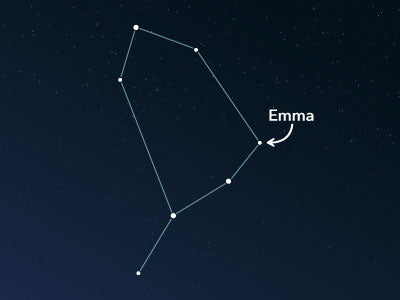The constellation Ophiuchus
Características
- Nombre latino
- Ophiuchus
- Hemisferio
- Ambos hemisferios
- Visibilidad
- May - October
- Área
- 948 deg²
- Estrella más brillante
- Rasalhague (HIP number 86032)
- Especialidades
- Globular clusters, open star clusters, galaxies, planetary nebula, reflection nebula

The Ophiuchus is a large constellation that stretches across the celestial equator. It was described by the Greek-Roman astronomer Claudius Ptolemy in ancient times and represents a man who is grabbing a snake. Therefore, it is commonly known as the serpent bearer. In its are many interesting deep-sky objects.
Hemisphere, visibility, and area
The constellation Ophiuchus is located on the celestial equator, stretching across both hemispheres. It is fully visible between latitudes 60° N and 76° S. Thus, it can be observed from large parts of Antarctica in the southern hemisphere and as far north as places like Bergen in Norway or the southernmost regions of Greenland.
The best time to observe this constellation is from May to October, with August providing particularly good conditions. It covers an area of around 948 square degrees in the night sky, ranking as the 11th largest among all 88 constellations.
On star charts, it is depicted by a group of stars connected to each other in an irregular shape. The brightest star is Rasalhague (Latin: α Ophiuchi, Alpha Ophiuchi), with an apparent magnitude of roughly 2.08, forming the northernmost point of the representation.
Although Ophiuchus is a large constellation, its faint stars make it less noticeable. To locate it in the night sky, it is helpful to orient oneself using the surrounding constellations.
Along the ecliptic, it is bordered by the constellations Sagittarius, Libra, and Scorpius. There is a special connection between Scorpius and Ophiuchus, as in 1928, some stars initially assigned to Scorpius were reclassified to Ophiuchus. As a result, it partially lies on the ecliptic. However, it was never counted among the astrological zodiac signs. Other neighbors include Hercules, Serpens, and Aquila.
Specialties in the constellation
In the western part of Ophiuchus lies the band of the Milky Way, which contributes to a series of globular star clusters, as well as other objects such as galaxies, open star clusters, a planetary nebula, and a reflection nebula. Two objects are described below.
M10 (Messier 10) or NGC 6254 is the closest to the sun and the second brightest globular star cluster in Ophiuchus. It has an apparent magnitude of about 6.6. The French astronomer Charles Messier found it in May 1764 and initially perceived it as a "nebula without stars." It was not until about 20 years later that the German-British astronomer William Herschel discovered that it was a cluster with a high stellar density. M10 contains a particularly large number of yellow stars and can be seen as a small hazy patch with binoculars. Only larger telescopes reveal its structures.
NGC 6572 is a young, small, and bright planetary nebula located in the celestial area of Ophiuchus. It is the gas shell of a white dwarf star that ejected it about 2,600 years ago. With an apparent magnitude of approximately 8.1, the object can only be observed with professional equipment.

Mythology
There are various stories surrounding the mythological origin of Ophiuchus. The most common legend is related to Asclepius, the son of the god Apollo and his lover Coronis. However, there are different interpretations of this story.
In one version, Apollo kills Coronis after she confesses to him that she has another lover. However, before she dies, she informs Apollo of her pregnancy, allowing him to save the child, Asclepius.
Asclepius was eventually raised by Chiron, a creature with the body of a horse and the torso of a man. Chiron taught Asclepius the art of healing, and he soon became a significant contributor to humanity, gaining a reputation as a great healer.
However, when Asclepius began to revive the dead, he incurred the wrath of Hades, the god of the underworld. As a consequence, Zeus killed him with a thunderbolt.
Today, the symbol of medicine is the staff of Asclepius, which is depicted as a rod with a serpent coiled around it, derived from the story of Asclepius.
PublicadoLeer más artículos interesantes

An overview of all 88 constellations
Learn more about all 88 constellations and read interesting information about the mythology, visibility, and features.

Planetario App
¡Descubre el cielo nocturno con nuestra aplicación de planetario!
Disponible para iOS y Android.

Nombrar una estrella en la constelación Serpent Bearer
Name a star in a constellation and create something that lasts for eternity.